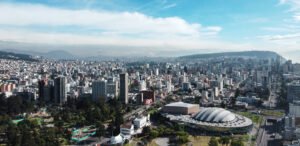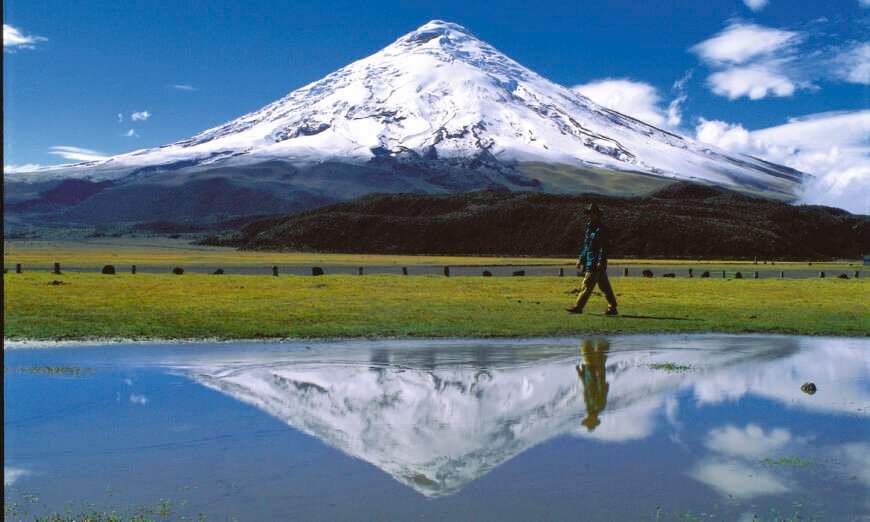 Nestled high in the Andes, at an altitude of 2,850 meters (9,350 feet), Quito, the capital of Ecuador, is one of the most unique cities in the world. Often referred to as the “Capital at the Center of the World,” it lies just 25 kilometres south of the equator. Quito’s combination of stunning geography, rich history, vibrant culture, and a rapidly growing economy makes it a remarkable destination for both visitors and international events.
Nestled high in the Andes, at an altitude of 2,850 meters (9,350 feet), Quito, the capital of Ecuador, is one of the most unique cities in the world. Often referred to as the “Capital at the Center of the World,” it lies just 25 kilometres south of the equator. Quito’s combination of stunning geography, rich history, vibrant culture, and a rapidly growing economy makes it a remarkable destination for both visitors and international events.
Geography and Location
Quito is located in a long and narrow valley, surrounded by volcanic peaks, which gives it dramatic views and a temperate climate year-round. The city of Quito, Ecuador, sits at an altitude of 2,850 meters (9,350 feet) above sea level. This makes it one of the highest capital cities in the world. It sits close to the equator, which gives it the nickname “the Middle of the World.” The “Mitad del Mundo” monument, a short drive from Quito, marks the equatorial line, where visitors can stand with one foot in each hemisphere. Despite its proximity to the equator, the city’s altitude provides cooler temperatures, with daytime highs averaging around 20°C (68°F).

People and Population
Quito has a population of approximately 2.8 million people, making it Ecuador’s second-largest city after Guayaquil. The city is a melting pot of cultures, with a strong indigenous influence intertwined with Spanish colonial heritage. The people of Quito, known as “quiteños,” are known for their warm hospitality, pride in their city, and strong cultural traditions. Spanish is the primary language spoken, though many indigenous languages, such as Quechua, are also part of Quito’s linguistic landscape.
Industry and Economy
As the political and administrative centre of Ecuador, Quito hosts the central government and major institutions. The city’s economy is diverse, with significant contributions from public administration, commerce, and services. Quito is a hub for finance, education, and culture, but it also has growing sectors in technology and innovation. The nearby fertile highlands support agricultural production, particularly flowers, fruits, and vegetables, which are key exports. Tourism is another crucial pillar of the local economy, as Quito’s rich history and natural beauty attract visitors from around the globe.
Government and Administration
Quito serves as the seat of the Ecuadorian government, housing the offices of the President, National Assembly, and various ministries. The government plays a significant role in shaping the city’s development, with policies focused on urban planning, public services, and infrastructure. As Ecuador’s political heart, Quito is also a centre for national decision-making and diplomacy, often hosting international conferences and summits.
Tourism: A Journey Through Time and Nature
Quito’s historical and cultural significance is best embodied in its Old Town, a UNESCO World Heritage Site. The city’s colonial centre is filled with cobblestone streets, churches, monasteries, and plazas dating back to the 16th century. The ornate La Compañía de Jesús church, with its stunning baroque architecture and gold-leaf interior, is a must-visit. The Basilica del Voto Nacional, one of the largest neo-Gothic basilicas in the Americas, offers breathtaking views of the city from its towers. Other notable landmarks include Plaza Grande, the political heart of the city, and Calle La Ronda, a lively street lined with cafes, galleries, and traditional artisans’ workshops. Outside the city, visitors can explore the nearby Pichincha Volcano, the TelefériQo cable car, and the Mitad del Mundo monument, which celebrates Quito’s location on the equator.
International Conferences and Events
Quito has increasingly become a centre for international conferences and events, drawing attention from across Latin America and beyond. Its state-of-the-art Quito Exhibition and Convention Center hosts a variety of summits, business meetings, and cultural events throughout the year. In recent years, the city has hosted notable gatherings such as the United Nations Habitat III Conference and the World Summit on Tourism. These events highlight Quito’s growing prominence as a destination for international diplomacy and collaboration.
Connectivity: Direct Access to the World
Quito is served by Mariscal Sucre International Airport, one of the most modern and busiest airports in South America. The airport connects Quito to major cities around the world, including direct flights to the United States, Europe, and key Latin American hubs. Quito is increasingly well-connected domestically, with flights to Ecuador’s main tourist destinations such as the Galápagos Islands, Guayaquil, and Cuenca. Though not directly connected to every global destination, international travellers find it easy to access Quito through its growing network of routes.
Conclusion
Quito is more than just a capital city; it is a vibrant and thriving metropolis at the literal centre of the world. Its blend of old-world charm, stunning natural surroundings, growing international connectivity, and economic dynamism makes it a city of the future. Whether exploring its historical streets or engaging in global business, visitors will find Quito a city where tradition and modernity converge seamlessly at the heart of the Andes.

